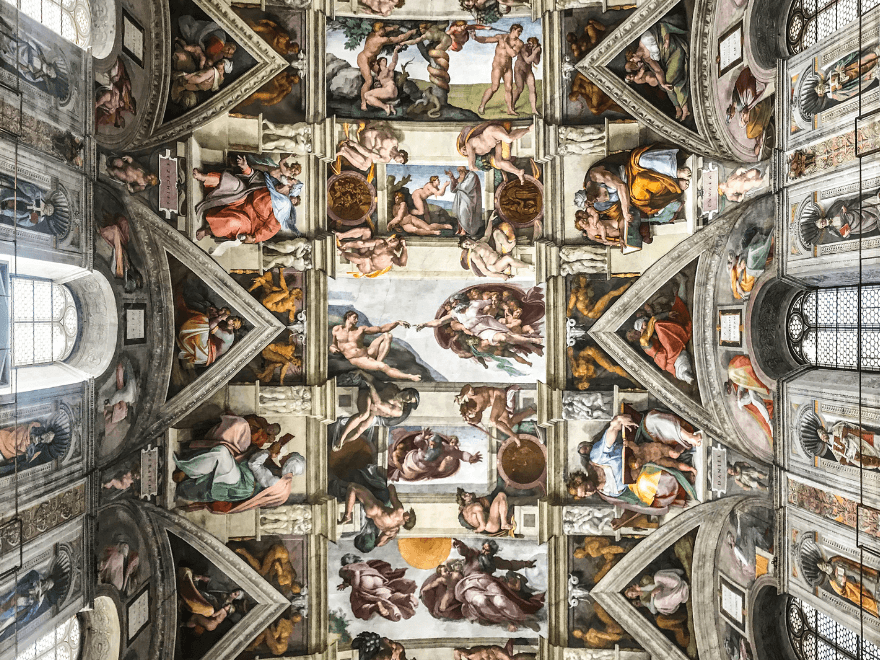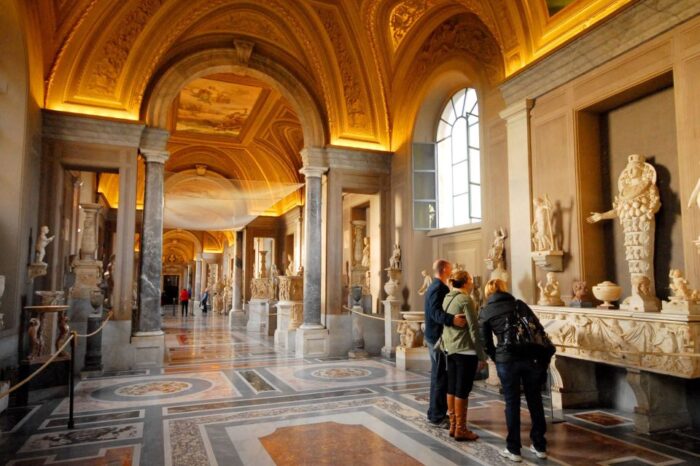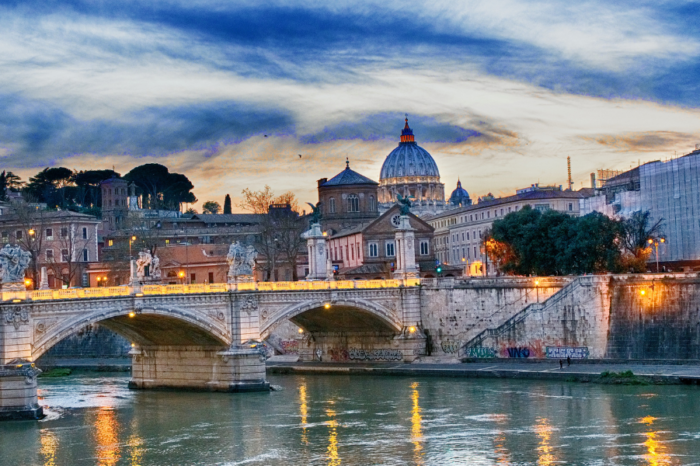The Vatican city is an autonomous city-state situated within the heart of Rome. It has profound worldwide recognition as it houses the headquarters of the Catholic Church. Masses of people perform a sort of ‘pilgrimage’ to Rome in order to visit Vatican City, due to its immense historical and religious significance.
Exploring the Architecture of the Vatican: A quick guide

The Vatican hosts some opf the world’s most significant historical architectural pieces. Various popes have commissioned the construction of major buildings within it, including St. Peter’s Basilica, the Sistine Chapel, and the Vatican Museums. These structures were designed by renowned architects such as Donato Bramante, Michelangelo, Raphael, and Gian Lorenzo Bernini.
This quick guide offers an introduction top this spectacular architecture, focusing on its key sites and styles. With this information in hand, your visit to the Vatican will be all the more awe-inspiring!

Why is the Vatican so special?
When was the Vatican built?
The history of the Vatican City is long, and it has developed over the span of centuries, lending it a grand sense of sacredness. The city itself was founded in the 4th century AD by Emperor Constantine I. It beginnings were as a small village, over time it expanded into a fully established modern city-state.
The area of the Vatican City was part of the papal states for many centuries, until the Lateran Treaty of 1929 that made it its own independent state. The aspects of the city that make it as famous as it is today, were built over time. The construction of St. Peter’s Basilica was started in 1506 and was largely completed in 1626.
The Vatican Museums with its extensive collection of art and artifacts took centuries to build its collection into what we see today. The first part of the museum was constructed during the reign of Pope Julius II from 1503-1513. It was the Cortile del Belvedere, which consisted of a curated collection of classical sculptures.
What was the Vatican built on?
St. Peter’s basilica is built on the burial ground of St. Peter, who was one of the twelve apostles of Jesus and was considered by Catholicism to be the first pope. Over time, more structures were built and rebuilt on the same site until the 16th century, when the construction of the basilica we see today, began.
How did the Vatican acquire so much art?
The Vatican’s extensive art collection was acquired through a mix of different historical processes such as patronage, diplomacy, donation and more.
- Through patronage: With every pope who took on the title, new art flowed into the Vatican! Each would get particular works commissioned, as art was (and still is) a powerful source for the expression of Catholic faith.
- Through diplomacy: Artistic and cultural exchanges are an important part of diplomacy. A lot of the Vatican’s collected treasures were gifted by nobles, different rulers and officials. Sculptures, paintings, manuscripts and artifacts were gifted throughout the centuries as expressions of goodwill.
- Through donations: Some families and individual artists would donate works to the church for the purposes of contributing to the legacy of the Church.
- Through commissioned works: The biggest example of art commissioned by the Vatican are the frescoes of the Sistine Chapel that were painted by Michelangelo.

Architecture of the Vatican
Altogether, the most famous architecture in Vatican City creates a melting pot of unique visual spectacles. Various styles can be observed such as:
- Romanesque architecture: This characteristic style of the 12th and 13th century came about due to the rise of monasticism. Larger churches needed to be constructed in order to accommodate more monks, priests and pilgrims. The style included rounded arches for windows, doors and passageways; tall, fortifying towers and very thick walls. St. Peter’s Basilica in Vatican City is an example of this.
- Gothic architecture: The Sistine Chapel was built with glimpses of Gothic characteristics in the 18th century. Although it is not very tall in height, Michelangelos’ artworks lend a sense of verticality to it. It also has arched windows in the upper section, emulating those of Gothic buildings.
- Renaissance architecture: This heavily influential style of architecture from the 15th and 16th century was characterized by a heavy return to classical art and architecture, which can be seen in the Cortile del Belvedere. Upon entrance, you will notice the symmetry and harmony of its courtyards and buildings, and the integration of sculptures and art into the architectural design.
- Baroque architecture: The 17th and the 18th century was punctuated with Baroque architecture, which brought along bold, elaborate style forms. The entirety of the Vatican Museums are an illustrious example of this. Some artworks are hung up at expansive volumes, from floor to ceiling, such as in the Gallery of Maps. The Baroque characteristic of playing with light and shadow are at play with the museum’s large windows, skylights and other lighting features that play with the experience visitor’s have. Baroque style also emphasizes movement and flow, which is seen through some of the museum’s curved forms and illusionary architectural curation that creates a sense of this flow.
- Neoclassical architecture: The 18th and 19th century were important for the emergence of this style of architecture, which is defined by clean, simple lines, symmetry and classical motifs. The Apostolic palace (where the popes live!) follows some of this form in its architecture and decorations.
Buildings in Vatican City
The Vatican City hosts some of the most important architectural sites:
- St. Peter’s Basilica: The world’s largest church as well as the oldest building in Vatican City, St. Peter’s Basilica is the greatest expression of Renaissance and Baroque architectural styles. This is where masses by the Pope along with other papal activities take place.
- Sistine Chapel: One of the world’s most famous chapels, it is adorned by breathtaking and heavily detailed frescoes by Michelangelo of biblical scenes such as The Last Judgment, The Creation of Adam and the Creation of Eve.
- The Vatican Museums: These illustrious museums that many flock to see house an extensive collection of art and archaeological artifacts ranging from antiquities from ancient Egypt to Renaissance frescoes from Raphael, Michelangelo and Leonardo da Vinci.
- Apostolic Palace: This magnum opus of Baroque architecture is the official residence of the Pope. It also serves as the administrative headquarters for the Holy See, which is the jurisdictional government of the Catholic Church. Hence, the palace also includes various offices and ceremonial spaces.

We hope that this article acts as a useful aid for your trip to the Vatican. Certainly you will be left with the undoubtable feeling of bewilderment, especially now that you are armed with some architectural knowledge.
We leave you with some tips that will help you plan your trip to the Papal State:
- Book your tickets in advance: We can not stress the importance of this enough! With the staggeringly high volume of visitors the museums have, this is crucial to ensure that you can get in, and that you do not waste the day trying to procure tickets.
- Plan your itinerary: Do not underestimate how overwhelming Vatican City can be! Especially when it comes to the museums, you do not want to be wandering around aimlessly, not extracting the most out of the experience.
The simplest solution to both of these challenges is to use a tour operator like Walks Inside Rome to book a comprehensive Vatican experience for you. We will help you choose the most suitable day for your visit, purchase your tickets for you and pair you with an expert tour guide, who understands the jewels of the Vatican, inside out! The tour guide will be able to tailor the experience for any kind of group with ease- including ones with kids!
Not your standard Vatican tour..
An added advantage to booking a tour with Walks Inside Rome is that you do not have to choose a standard, run-of-the-mill tour of the Vatican! Through our contacts with the church, we are able to offer special tours such as the Clavigero tour and an Early Morning Vatican Tour.
Back to top

